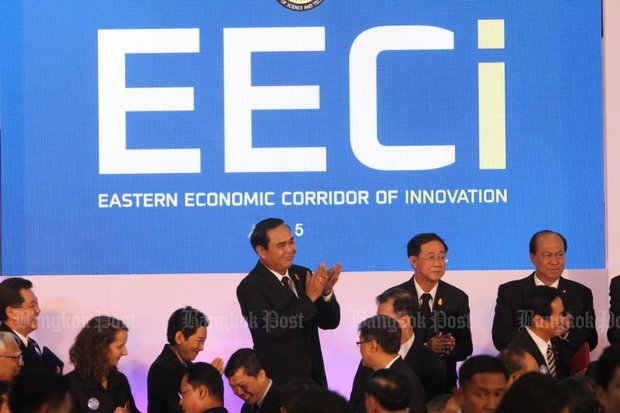
The Ministry of Labour will meet with cabinet members and present a strategy to produce more skilled labourers to match demand from the Eastern Economic Corridor (EEC) within two months after a survey found that almost 30,000 qualified workers are still required in the special economic zone.
Labour Minister Pol Gen Adul Sangsingkeo said the ministry is drafting a plan to build a skilled workforce to match rising demand in the EEC after investors expressed concern about the inadequacy of a sufficiently skilled workforce.
The EEC covers 30,000 rai in the eastern provinces of Rayong, Chon Buri and Chachoengsao.
According to a survey conducted among 22,964 entrepreneurs earlier this year, about 20,000 respondents said they anticipated potential labour shortages and do not have any problems at present.
However 2,178 entrepreneurs said they still require a total of 29,914 qualified technical and vocational workers.
The industries most in need are: electronics, food processing, rubber, plastics, logistics, hotels, banks, construction, and retail.
Chon Buri is facing a shortage of about 15,000 workers while Rayong and Chachoengsao need 10,000 and 5,000, respectively.
The government earlier approved a budget of 861 million baht to develop human resources in the EEC.
This aims to supply 40,000 vocational students within five years to 10 targeted industries to drive economic growth.
They are: next-generation cars; smart electronics; affluent medical and wellness tourism; agriculture and biotechnology; food; robotics for industry; logistics and aviation; biofuels and biochemicals; digital; and medical services.
Pol Gen Adul said one solution would be for the EEC to develop its own skilled labourers by upgrading the level of vocational education in the three provinces. Another would involve setting up training courses to upgrade the skill level of current workers, he said.
Such strategies are now being developed by the Labour and Education ministries.
"After the plan has been drafted we will set up public hearings with local communities before making a presentation to the cabinet," Pol Gen Adul said, citing a two-month time frame.
EEC Office secretary-general Kanit Sangsubhan said the government is scheduled to introduce the Sattahip model, based on the success of Sattahip Vocational College, whereby the school cooperates with the government and private firms to implement work-integrated learning.
The scheme eyes students with a GPA of 2.5 or higher from low-income families who plan to study at vocational schools.
Companies will offer the students a daily stipend, tuition and welfare.
Ten companies have participated in such initiatives including Siam Cement Group, Michelin, Thai Oil and the Metropolitan Electricity Authority of Thailand.